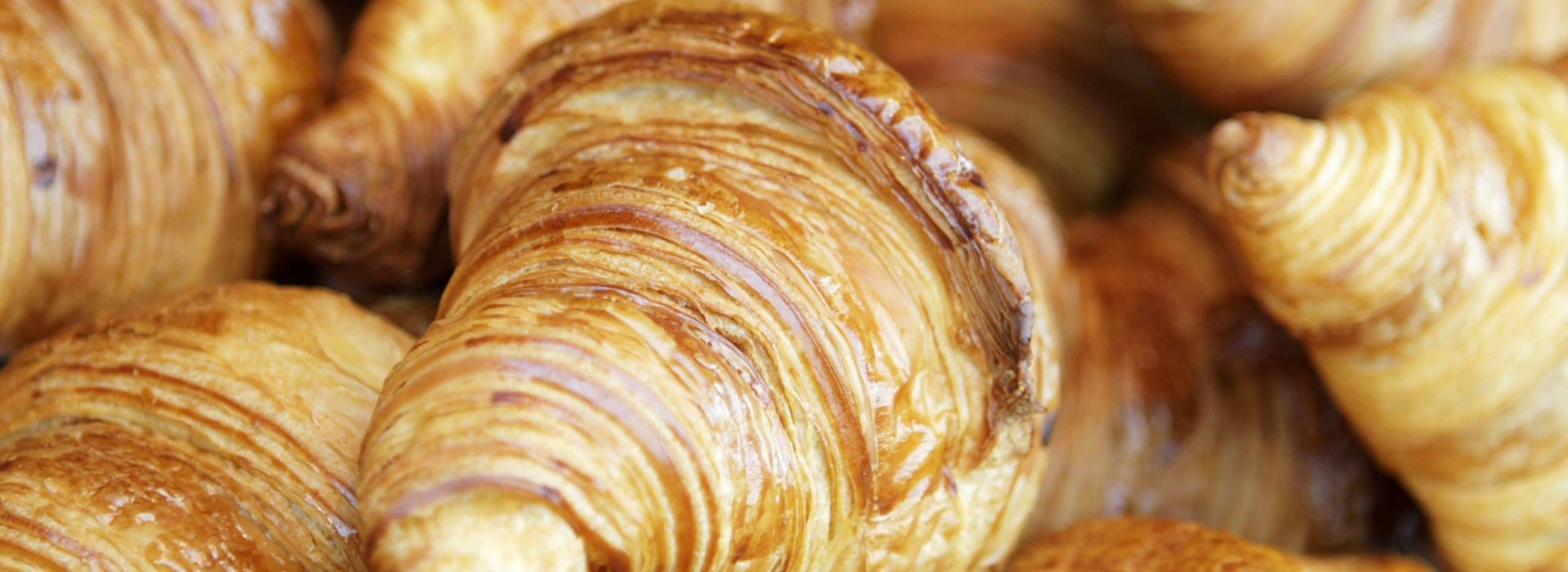Flaky and Butter Croissants
What makes perfect butter croissants? Some will tell you it’s 27 layers while others firmly argue for 32 layers. But what is a pre-dough formation, and is there a trick to the best dough lift? A croissant novice can easily lose their head when it comes to all of this viennoiserie sorcery. Surely there’s some sort of life hack to help you enjoy only the most buttery and flaky of them all…
We’re here to tell you these secrets. But before we introduce you to the hack for our favourite breakfast pastry, it’s worth understanding more about the manufacturing process. We will try to avoid going too deep into terminology. But this understanding of the process allows you to properly appreciate the effort that goes into butter croissants.
Croissant History
It originated in Austria and is actually modeled off the kipferl. This is a type of crescent-shaped bread roll still common today in many parts of Europe. It is thought to have adapted from a version found at Boulangerie Viennoise, a bakery that operated in Paris during 1938-1939. However, the croissant as we know it differs from the kipferl due to a technique called dough laminating. We’ll eventually get to this, but for now, we begin with the pre-dough.
Pre-dough Phase
Before the laminating step, bakers look to set up an ideal pre-dough formation stage. That’s when dry ingredients are mixed in a cool environment with in-dough fat and water. According to Herbert Weiser from the German Research Centre of Food Chemistry, the pre-dough point is where the hydrated glutenin proteins impart fluidity to the dough’s viscosity. In other words, the dough is not runny. It needs to be cool now to ensure optimal gluten development. What’s more, a closer temperature to the roll-in fat means better incorporation of the fat. This is crucial for a soft croissant interior.
Dough Laminating
The next step involves laminating the dough, i.e., creating layers and folding in butter. This is what gives us the fun air pockets, the flaky exterior, and the unmistakable taste we’re always searching for. The fat layer is essential to maintain separation between folded dough layers and ensures proper dough lift when the croissant goes into the oven. How many layers of fat and dough you create depends upon whether you’re following the English or French method of lamination (Video). But generally, you’re looking at anywhere between 16-50 layers. Much to the disgust of many purists.
Fermentation Step
After moulding the laminated dough into its desired croissant shape, we have the fermentation stage. It’s relatively simple. This phase involves yeast breaking down to make sugar and CO2. In other words, proofing your croissant! Anaerobic fermentation ensues when there’s no more oxygen. Ethanol and more CO2 are produced at this time. Bakers have to balance the overall release of CO2 otherwise they won’t achieve the desired pastry lift.
Baking the Butter Croissants
Yep, we’ve made it to the last step; the oven baking. This allows for the leavening of the dough when the croissant’s water is converted to steam. The roll-in fat actually helps with this part as well. We see the dough lift here. The gluten becomes less flexible and more rigid, too. Then voila, suddenly we have flaky and golden butter croissants ready to be gobble! Of course, wait until the croissants have cooled down.
Simple, right? Hmmm, maybe for some… If you’re waiting to see what the life hack is, get ready. We can show you how to skip steps 1-4 and basically jump straight to the eating part. It involves looking at these fresh and locally made croissants and letting a local baker know how much you appreciate them making fresh butter croissants for you!





